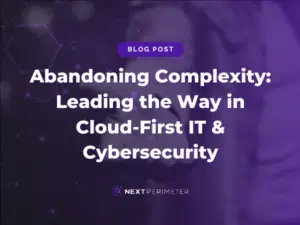Earlier this month, we discussed how to determine the return on investment (ROI) of technology and the pivotal role technology plays in a company’s bottom line. Organizations that turn their Technology Powerhouse (IT dept.) from a cost-center to a business asset will generate a greater ROI, experience higher levels of productivity, collaboration, and employee engagement. In short, companies that invest in the right technology for their businesses tend to out-compete their competitors and over-deliver for clients.
Yes Susan, happy employees who love the tools their leaders provide, will produce better quality work in less time… than staff that trudges an up-hill battle against slow laptops, network connectivity issues, or the dreaded office printer each day. People expect technology to work; there’s enough items to stress about in the workplace without worrying about saving documents every two seconds or losing connection while onboarding one your largest clients (thanks Skype for Business and that conference room furthest from the wireless access point).
It’s not rocket science – but with any craft, creating a cohesive relationship between business technology and people, requires a well-executed methodology, skill and deep expertise.
The Past – Why SMBs Are Turning to Managed IT Support Services?
In the past, some businesses thought they could get away with administering the bare minimum amount of maintenance. This would entail fixing technology if and only if it ever experienced technical issues. The problem with this reactive model is that it treats the symptoms quickly adds up and eventually becomes more costly than fixing the root cause for small businesses. Due to financial limitations and lack of executive buy-in, many companies continue this vicious cycle because it can be difficult to find an affordable full-stack IT administrator who can manage and maintain their in-house infrastructure.
What’s the Value of IT Managed Services?
Technology is booming and increasing each day. As a business owner, you may struggle to keep up with all the new responsibilities that technology adds to your plate and the plate of your IT department. Most of the time, responsibilities outside of their original roles take over, leaving you with a less than efficient team of IT professionals.
Managed Services allow you to augment your existing IT staff and infrastructure by partnering with a dedicated IT firm to take care of your network, servers, computers, and all your technology needs. This is the perfect solution for companies who need to operate at peak efficiency but do not have the resources to manage a large on-site IT staff.
The main difference between managed IT and other models of service stems from the issue of downtime. When a business is not running at its best, it starts to lose money. Technology that was initially implemented to save money in the short-term winds up costing you more in the long-term, despite addressing the issue and resolving it. The issue is that it happened after the fact, and thus, downtime took hold and created unnecessary expenditures.
As you focus on your company’s growth, your IT services partner will manage the scalability of your infrastructure from mundane troubleshooting and help desk troubleshooting to largescale company-wide network upgrades and everything in between. Sometimes, businesses grow so suddenly that it takes ample time to ramp up IT services, where your internal team must focus more on updates and troubleshooting to keep the business going than mission-critical elements or strategies that would otherwise help propel your company to the next level. An MSP focuses on making it easier for you to scale fast while remaining secure, compliant, and without downtime.
A high-value managed services partner doesn’t simply serve as a vehicle for outsourcing basic technology troubleshooting and monitoring activities. Instead, this partnership between your internal IT staff and the MSP is one that augments your internal members’ capabilities with a unique blend of technical expertise.
When you need IT support, what’s your best option for support? Most businesses have two distinct choices; either hire an in-house IT support employee (the DIY fix), or partner with a managed service provider (the master mechanic).
Though both options have their pros and cons, one comes out on top for growing organizations that want to stay ahead of the curve.
In-House IT vs. Managed Services – Which Is Right For Your Business?
Small organizations with less than ten employees may prefer to hire one person to managed day-to-day IT operations. Still, even growing with more than 20 employees usually cannot afford to hire an entire team. Instead, these companies will settle for a jack-of-all-trades IT administrator who can handle a bit of everything. This individual may be an expert in Mac or PC helpdesk support and have basic network expertise – but they are often far from a master in each aspect of required to manage your infrastructure. For small organizations with less robust infrastructure needs and few employees, an in-house IT administrator may be the best route.
Benefits of In-House IT:
- Immediate on-site support when you need it
- In-house administrators can gain deep internal knowledge of the company’s infrastructure and specific needs
Disadvantages of In-House IT:
- Increased personnel costs (salaries, raises, benefits, office supplies, training, and taxes)
- Isolated knowledge residing in a single point of failure can spell disaster for small companies when an admin departs from your company without detailed SOPs
- Limited experience and knowledge of best practices and technology advances
- Possible overtime charges for after-hours emergencies
Outsourced IT
Many companies prefer to get their IT support from a third-party source. They typically deliver their services at a lower cost while providing a greater quality of work. In other words, partnering with a managed service provider yields can often provide more benefits than having in-house IT support.
Benefits of Managed IT Services:
- Access to teams of industry experts and specialists at no extra cost
- Flat, stable, monthly rate of service that’s easier to budget around
- 24/7 availability with remote support at your fingertips within minutes and access to a local on-site visit from a technician when needed
- Legally binding SLA to guarantee uptime and quality of service
- Shared access to modern technologies, software, and hardware to stay competitive
- Centralized real-time alerts, monitoring and management systems provide more efficient monitoring, reporting and resolution
- Dedicated technicians and administrators that will learn about your companies’ specific gaps, unique needs or technology use-cases with deep industry-specific expertise.
Disadvantages of Managed IT Services:
- Finding the right MSP to work with takes time and effort
- Diversity of service delivery options can seem complex and confusing
- Limited on-site availability
Still not convinced? Check out our in-depth article on the benefits of in-house vs outsourced IT.
6 Tips To Select A Business Technology Partner
Here are a few criteria to consider when selecting a managed service provider:
- Mapping Internal and External Synergies: It’s critical that your organization’s business and IT requirements match the vendor’s product offerings and business process model. Consequently, an organization must catalog and map its internal systems and thoroughly understand workflows, business processes, objectives, and gaps. A thorough understand of your organization’s requirements makes it possible to find an IT services firm that can simplify and streamline existing processes while strategically planning for greater innovation.
- Offloading Routine Tasks: Part of the appeal of an IT services firm or MSP is offloading routine tasks and time-consuming processes. This helps an organization step away from tactical tasks — a.k.a. “keeping the lights on” — to more strategic endeavors. As a result, it’s important to ask vendors how they can help your business become more strategic — and understand how they plan to make this happen.
- Know the history of the MSP: Was the IT firm a break-fix solution provider or did they recently transition from a residential repair shop to a full-service business IT solution provider? If so this could be a red flag that the organization has recently transformed into an MSP to take advantage of a growing trend without undergoing the process of maturity that brings scalable efficiencies and standardized processes nor are they likely to have established long-term relationships with hardware or software vendors which could save your organization thousands. Pedigree is not to be taken likely as you are trusting your business with this partner, look for a partner that has been in business for over a decade. You’ll want a partner with the history to support legacy systems, mature business processes, and one that is current with today’s digital transformation technology.
- 24/7 Support and 365 Day Availability: Our employees may not be able to work 24 hours a day, but our networks, servers, infrastructure, and computers do. The technology partner you choose should be able to meet the demands of the always-on enterprise and modern business, with 24-7-365 availability. When choosing any managed services offering, you will rest easier knowing that the IT partner can deliver the professional services you need day or night.
- Thought Leadership: IT firms typically offer thought leadership as well as helpful ‘how-to’ articles, and self-service Wikis for their customers which allow business owners, department heads, and you all employees to gain access to expertise and resources that might otherwise be unavailable. If your organization is looking to harness the full power of digital technology, it’s vital to understand how a services firm can guide you along the journey.
- Metrics: An IT provider will have clear Service-Level Agreements (SLAs), metrics, and standards that are crucial to your success. Complete your due diligence by asking the potential vendor what their SLAs are, response times and cross-reference recent reviews on their Google profile, Yelp or other social sites to gauge whether the partner delivers on these standards. It’s also important to spell out specific procedures and compensation if the vendor doesn’t meet the service level agreement standards. Understand all criteria and compensation before signing on the dotted line.
Today’s Managed IT takes a proactive approach to prevent downtime through remote monitoring, centralized infrastructure management, and maintenance. After all, it’s in the best interest of both parties for the MSP to reduce the number of service tickets required to maintain everyday operations. By preventing problems from happening in the first place, you can save money by correcting these issues before they become massive pitfalls that hurt your bottom line and steal budget from growth-focused initiatives. Since managed IT can be leveraged on a per-month basis at an affordable price; you have no excuse to not properly maintain your technology solutions. Ask yourself this question: if you could save money in the long term with a small monthly payment, why wouldn’t you?
Find Your Right Solution
In the end, your company will seek a solution that maximizes profitability, efficiencies, and provides the best quality of services that fits within your budget. When speaking to vendors, comparing service offerings and respective pricing, is an important first step. Your company has many ways to get the technology and expertise you need without overspending or sacrificing capability.
IT Support Guys’ managed IT business model is perfect for small and medium-sized businesses since we offer ‘all you can eat’ 24/7 support meaning. Not all technology or technology company is created equal. Investing in the right technology and managed IT solutions partner ensures your employees are productive for continued growth, best of all – our cost-effective unlimited service plans and excellent customer support means you are protected while saving funds that can be allocated to building your company.
Your dedicated account manager and technician will learn the unique intricacies of your business, industry, and current IT implementation to offer personalized recommendations that help your company increase production. Plus your CFO and finance team will appreciate the predictability our unparalleled offering presents.
We continue to provide Managed IT Solutions for small to mid-sized businesses in Tampa and Los Angeles. Call us today at 855-4IT-GUYS (855-448-4897) and discover how our unlimited support plans help support smart, hyper-growth focused organizations.





